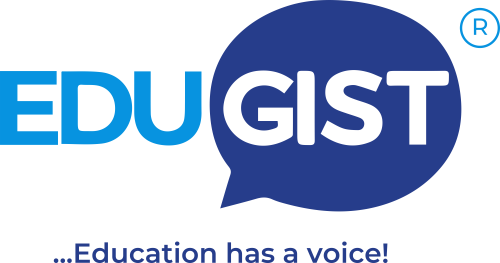The outbreak of COVID-19 severely disrupted global economies, and the education sector was not spared. Approximately 90% of students worldwide—equivalent to around 1.5 billion learners—could not physically attend school during the height of the pandemic. This crisis forced schools to adopt digital technologies rapidly, bridging the learning gap for millions. However, digital transformation in education extends far beyond the emergency responses of post-COVID online learning.
Many educational institutions had already been integrating digital technologies prior to the pandemic. Personally, I was already using Zoom teleconferencing platform for my coaching services since 2017, and ditto for many others. The health crisis simply accelerated this transformation, compelling administrators, educators, and students to embrace digital tools to keep learning going despite lockdowns and school closures. This shift signifies an essential evolution in education, requiring both immediate adaptation and long-term strategic integration of digital tools.
The digital transformation in education is reshaping how institutions function, making education more accessible, efficient, and personalized. It provides students with the necessary digital skills for the modern workplace. So, it is high time for education policy makers and administrators in Nigeria to come up with necessary policy frameworks and legislation to ensure smooth transition into digital transformation.
This article explores various facets of digital transformation, the key trends emerging in educational technology, the challenges that institutions may face, and the steps required for successful implementation in the education sector. It also offers some recommendations for education policy makers and administrators that will ensure smooth integration and adoption with minimal disruption to academic work and interfaces with students and other stakeholders in the industry.
Ⅰ. WHAT IS DIGITAL TRANSFORMATION IN EDUCATION?
Digital transformation in education is the fundamental reconfiguration of educational processes through the integration of advanced digital technologies. It encompasses more than simply gaining a competitive edge—it is about addressing critical issues such as ensuring equitable access to education for all and enhancing the quality of education provided.
This transformation provides a unique opportunity to tackle both local and global challenges, such as educating underserved populations, improving the quality of instruction, and ensuring that students acquire the skills needed to thrive in the digital economy.
Ⅱ. LEVELS OF DIGITAL TRANSFORMATION IN EDUCATION
Digital transformation in education operates at four interconnected levels:
-
- Technology Level
This involves the deployment of digital tools and platforms that facilitate teaching and learning. Recently, I read a piece on Nairametrics online Magazine that Nigeria currently has about 30 megawatts of data centre capacity, which is 5% of the needed capacity to sustain its digital economy drive, according to the Chief Executive Officer of Digital Realty Nigeria, Engr. Ikechukwu Nnamani. He further opined that a report published some years back indicated that Nigeria, as of now, should have at least 600 megawatts of IT load, given the size of the economy, population, GDP, and what it should be as a truly digital economy.
-
- Individual Level
The teachers and students who utilize digital resources in their educational processes are involved here. I have no doubt that both teachers and students are ready to adopt digital transformation, but the handicap remains the inadequate infrastructures in our schools across Nigeria.
-
- Institutional Level
This encompasses educational institutions that adopt and drive digital initiatives. From information available from NUC, NATEB and NCCE, and most institutions websites, it is obvious that majority of educational institutions across the country are paying mere lip service to the issue of digital transformation in education. They are all still using traditional methods to teach in the 21st century! Even some that operates distant learning centres are still grappling with the nuances of complete digital transformation. The only exception is National Open University of Nigeria (NOUN) – with the largest student population in Africa and still counting. They invested heavily in e-learning platforms to enhance the reach of their services to students even outside Nigeria.
-
- Regional Level
This has to do with the governing bodies that provide legislative backing and the necessary funding to enable digital transformation. Many people will agree with me that our education policy makers and administrators are also not doing enough to make education accessible to everyone in Nigeria. Education at all levels is poorly funded across all tiers of government. We need an enabling law for AI usage, deployment, and ethical framework to avoid potential misuse, while we are considering digital transformation of education in Nigeria. Even with that law, if there is no funding to support the initiative, it will follow the trend of its predecessors in policy anomy and embalmment.
I like to put on record the positive effort of the Nigerian government through the Ministry of Communications, Innovation, and Digital Economy. The Minister, Dr. Bosun Tijani has been encouraging Nigerians to embrace and develop AI through its various initiatives. So, my clamour for digital transformation of education fall into this clarion call. The Ministry recently released the country’s National Artificial Intelligence Strategy document, which is currently being reviewed by MDAs, following which it would be adopted as a national policy to guide all government efforts in Al.
I posit that the interconnectedness of these levels implies that a shift at one level often precipitates changes in the other three areas. Digital transformation is not static; it requires constant modernization of educational methodologies and administrative processes, which contrasts with the more traditional, fixed approaches of the past. The question is: Is Nigeria ready to jumpstart its educational development? The opportunity is here through digital transformation of education!
Ⅲ. DIGITAL TRANSFORMATION CHALLENGES IN THE NIGERIA EDUCATION INDUSTRY
While digital transformation promises immense benefits, it also presents a range of challenges that are deeply rooted in Nigeria’s unique socio-economic and infrastructural context:
-
- Lack of Clear Strategy
Without a robust strategy, schools struggle to effectively integrate digital tools. A clearly defined roadmap ensures that objectives are met, and obstacles are addressed systematically. In Nigeria, the absence of a unified national digital education policy exacerbates this issue. Many institutions operate in silos, lacking the strategic guidance needed to leverage digital solutions across all levels of learning. The lack of a coherent strategy also affects funding allocation, making it harder to direct resources efficiently. As pointed out above, the federal government is presently putting together the country’s National Artificial Intelligence Strategy document, which is currently being reviewed by MDAs. We hope that once cleared and ratified by the National Assembly, an enabling law that guides usage becomes operative with smooth implementation.
-
- Technology Infrastructure
The availability and reliability of technology infrastructure are critical to successful digital transformation as already noted above. Schools need the right platforms and tools to encourage an engaging learning environment. However, many institutions face obstacles related to cost, accessibility, and integration. In Nigeria, the high cost of acquiring ICT infrastructure, poor electricity supply, and unstable internet connectivity are major barriers. Many schools, particularly in rural areas, are still without basic technological infrastructure, making it difficult to adopt even the most rudimentary digital learning tools. This disparity puts urban schools at a significant advantage while rural schools lag behind.
-
- Administrative and Leadership Mindset
Successful digital transformation requires a shift in how administrators and educators think. Schools must adopt a digital mindset, using virtual spaces and digital tools effectively while understanding the limitations and possibilities of these tools. However, many administrators in Nigeria’s education sector are resistant to change, clinging to traditional teaching methods and administrative processes. This resistance is compounded by a lack of digital literacy among school leaders, further hindering the digital transition. Change management processes that address the fears and concerns of educators and leaders are essential for driving this transformation forward.
-
- Skills in Utilizing Technology
Teachers and students must continuously develop their skills to keep up with evolving technologies. Schools also need to provide technical support to ensure smooth implementation. This challenge highlights the need for ongoing training and professional development. In Nigeria, many teachers lack the requisite digital skills, as ICT training is not yet a core component of teacher education programs. Professional development opportunities are often limited, especially for teachers in public schools. This skills gap results in a lack of confidence in using digital tools, which stifles innovation in the classroom. Addressing this requires both governmental intervention and collaboration with private sector stakeholders to deliver targeted digital skills training.
-
- Inequality in Education
While digital tools can enhance equity, they can also exacerbate disparities. Students in rural or low-income areas may face limited access to the technology required for learning, thereby widening the educational gap. In Nigeria, the rural-urban divide is pronounced, with rural schools being grossly underfunded and under-resourced. While some private schools in urban areas have the financial resources to invest in cutting-edge educational technologies, public schools, which cater to a larger percentage of students, are left behind. This inequality limits the democratizing potential of digital learning and could reinforce existing socio-economic disparities if not addressed.
-
- Cost of Implementation
The cost of adopting digital transformation in education is another major hurdle. Most of our schools, particularly public ones, lack the financial capacity to invest in necessary digital infrastructure such as computers, smart boards, and reliable internet. In addition, the cost of maintaining these systems and regularly updating software can be prohibitive for many institutions. The challenge is even more acute when considering the cost of training personnel to effectively manage and utilize these tools. Government funding that is limited is also embezzled by both political elites and civil servants, so there is a need for public-private partnerships to address these financial constraints.
-
- Curriculum and Content Adaptation
Adapting the national curriculum to fit a digital format presents its own challenges. In Nigeria, much of the curriculum is still delivered through traditional, print-based materials. Transitioning to a digital curriculum requires not only the digitization of textbooks and educational materials but also the incorporation of interactive content, multimedia, and online assessments. This requires significant investment in digital content development and a shift in the way educators approach lesson planning and delivery. Moreover, there is a lack of local content (not in all areas anyway) that is tailored to Nigeria’s unique cultural and educational needs, further complicating the digital transformation process.
-
- Cultural Resistance and Attitudes Toward Technology
Cultural factors play a significant role in the adoption of technology in education. In Nigeria, where traditional teaching methods have been in place for decades, there is a cultural inertia that prevents the quick adoption of digital tools. Parents, students, and even teachers may question the relevance of technology in education (and they are already), viewing it as a distraction and job usurper rather than a tool for enhancing learning. There is also a perception that digital transformation is only for elite schools in urban centres, further reinforcing the digital divide.
-
- Cybersecurity and Data Privacy
As schools increasingly adopt digital tools and platforms, concerns over cybersecurity and data privacy will become a great issue to contend with. Many institutions lack the resources and expertise to safeguard sensitive data, making them vulnerable to cyberattacks. In Nigeria, where the digital literacy rate is still low, the risks associated with data breaches and the misuse of student information are heightened. Without proper cybersecurity measures in place, the drive toward digital transformation could expose schools to significant legal and financial risks. There is a need for comprehensive policies and guidelines and enabling laws to ensure that digital education platforms adhere to global data privacy standards.
-
- Sustainability of Digital Transformation
With deep foresight, I think sustainability is a critical challenge in Nigeria’s digital transformation journey. Many digital initiatives are launched with much fanfare but fizzle out due to poor maintenance, lack of follow-up funding, and the absence of a long-term vision. Ensuring that digital transformation efforts are sustained over time requires consistent investment in infrastructure, ongoing training for educators, and regular updates to digital tools. Moreover, creating a culture of continuous innovation is essential for maintaining momentum in the face of technological advancements and shifting educational needs.
Ⅳ. DIGITAL TRANSFORMATION TRENDS IN EDUCATION
Technological trends are constantly reshaping the education landscape. Below are six key trends that are significantly impacting the sector:
-
- Artificial Intelligence (AI)
Artificial intelligence (AI) has begun to revolutionize education by offering tools that enhance learning experiences. For instance, AI-powered chatbots provide students with real-time assistance by answering questions and guiding them through lessons. AI also enhances inclusivity by providing text-to-speech options for students with reading disabilities or Dyslexia. Furthermore, AI facilitates customized learning pathways, enabling students to progress at their own pace and according to their specific strengths and weaknesses.
Key applications include:
-
-
- Customized Lessons**: AI analyses students’ progress to create personalized curricula.
- AI-enabled Assessments: AI identifies students’ weak points and helps teachers offer targeted support.
- Student Advisory: AI-based systems handle common inquiries, allowing educators to focus on more complex tasks.
-
-
- Machine Learning (ML)
As a subset of AI, ML helps institutions analyse vast amounts of data to predict outcomes, assess performance, and automate routine tasks. Applications include:
-
-
- Teaching Assistance: ML can provide study materials, lecture notes, and practice exercises.
- Prediction: ML algorithms help predict student enrolment and identify at-risk students.
- Automation: Repetitive administrative tasks are automated, freeing up time for more impactful activities.
-
-
- Augmented Reality (AR) and Virtual Reality (VR):
AR and VR technologies create immersive learning experiences. Students can engage with content interactively, participate in simulations, and visualize complex concepts.
Examples include:
-
-
- Interactive Simulations: VR can simulate real-world environments, allowing students to engage with scenarios in a controlled, virtual space. Virtual reality is making significant contributions to experiential learning, particularly in fields that require hands-on practice. For instance, medical students can perform surgeries in a virtual setting before attempting them in real life, thereby enhancing their skills and confidence. VR simulations can bring abstract concepts to life, making learning more interactive and practical, especially in science, technology, engineering, and mathematics (STEM) disciplines.
- Specialized Training: AR and VR are increasingly being used for vocational training, such as piloting and surgery.
-
-
- Gamification
Gamification integrates game elements into learning processes, such as point-scoring, challenges, and rewards, to engage students and enhance motivation.
Key benefits include:
-
- Enhanced Motivation: Gamified learning promotes student interaction, collaboration, and a goal-oriented mindset.
- Instant Feedback: Digital games offer immediate feedback, allowing learners to correct mistakes in real-time.
NOTE: Gamification has become a key trend in making education engaging. By integrating game-like elements—such as badges, rewards, and progress tracking—into learning platforms, students are motivated to continue learning in a fun, interactive way. These elements create an incentive-driven environment that enhances students’ focus, retention, and overall enjoyment of their education.
-
- Internet of Things (IoT)
IoT connects physical devices, enabling better classroom management and interaction. IoT solutions include:
-
-
-
- Smart Classrooms: Connected devices like smart boards, tablets, and VR headsets offer interactive learning experiences.
- Environmental Control: IoT enables institutions to manage lighting, ventilation, and security, improving the overall learning environment.
-
-
-
- Blockchain
Blockchain technology provides a secure and transparent method for managing educational records and processes. Use cases include:
-
-
- Smart Contracts: These contracts automate administrative tasks, such as course enrolment and exam access, ensuring efficiency and transparency.
- Academic Records: Blockchain allows for secure, decentralized storage of academic data, streamlining the process for transferring records between institutions and verifying qualifications.
-
-
- Other Current Trends In The Digital Transformation Of The Education Sector
a) Universal Accessibility
One of the most prominent digital transformation trends in education is universal accessibility. Advancements in technology enable students from remote and underserved areas to access quality education, which was previously out of reach. Online learning platforms and virtual classrooms have made it possible for students worldwide to enrol in courses and programs without the need for geographical proximity. This has broken down barriers, offering opportunities for those who might have faced challenges due to location, mobility, or other constraints.
b) Customization
Digital technologies allow for a more personalized learning experience. Educators can now create customized curricula that suit individual learning styles, whether students need extra support or more challenging material. This flexibility leads to greater retention of information and encourages students to take more initiative in their learning journey, fostering independence and self-directed education.
c) Securing Digital Devices
As technology becomes an integral part of the daily lives of students and educators, the importance of digital security has emerged as a key concern in the ongoing educational transformation. Schools gather a vast amount of student information, ranging from personal details to academic records, and ensuring the protection of this data is paramount.
Implementing strong security protocols to manage the collection, storage, and transmission of sensitive student data is essential as schools advance digitally. It is equally crucial for institutions to establish secure systems for submitting assignments and verifying student identities, particularly for digital exams or assessments. A breach of security could have serious consequences for both individuals and institutions, making cybersecurity a top priority during the shift toward digital education.
d) Promoting Digital Citizenship
As the influence of digital technologies expands in students’ lives, it is essential that they are taught how to engage respectfully and responsibly online. Much like learning professionalism for workplace settings, digital citizenship involves teaching students proper online behavior. Schools are increasingly recognizing the value of this, and educating students on digital citizenship has become a major trend in modern education.
When students learn to be responsible digital citizens, they are equipped to fully leverage technology’s potential. For the best outcomes, schools should integrate digital citizenship into their broader culture, involving both students and educators. These lessons help foster a more collaborative online environment, preparing students to succeed academically and in their future careers.
By receiving this type of training, students are better prepared to navigate a digitally connected professional landscape. Their ability to use the internet effectively and engage with others in digital spaces positions them to excel in their chosen professions, making digital citizenship education a crucial emerging trend in education.
e) Harnessing Big Data
Schools have long gathered extensive information about their students, such as demographics, grades, and course details. With the rise of big data, institutions now have the ability to analyze this information more deeply to gain insights into student performance and trends. Big data involves leveraging advanced technologies and algorithms to process large amounts of data and uncover meaningful patterns.
This shift integrates data from multiple sources. In the past, valuable student information often remained isolated within specific departments or with individual staff members, limiting its broader utility. By breaking down these silos, schools can gain a more holistic understanding of their students and programs, leading to improved educational outcomes.
The analysis of big data can reveal key insights, including:
-
- Identifying where students are excelling or facing difficulties in their academic programs, enabling schools to refine their teaching methods and improve learning experiences.
- Recognizing trends in student populations, from academic performance to career outcomes, which helps institutions enhance their programs and support services.
- Understanding how different teaching styles and course formats, such as online classes or seminars, impact student success, allowing schools to tailor their degree programs more effectively.
The use of big data empowers schools to better support their students. It informs decisions about personalized learning options, course structure, and the provision of resources, helping institutions respond more effectively to student needs.
It is noteworthy that the growing digital age has undeniably reshaped the education sector. Institutions at all levels are increasingly recognizing the benefits and strategies that technology can bring to their teaching methods. Those interested in staying up-to-date with the latest trends in digital education should consider these trends as discussed here. Schools and students alike can maximize the potential that digital transformation offers through proper integration of these strategies into educational programmes.
Ⅴ. BENEFITS OF DIGITAL TRANSFORMATION IN EDUCATION
The integration of digital technologies into the education sector offers numerous advantages, which are particularly relevant in addressing Nigeria’s educational challenges. These benefits include:
-
- Improved Engagement
Digital tools provide students with a more interactive and engaging learning environment. Traditional teaching methods may struggle to capture the attention of today’s learners, but digital tools like educational games, simulations, and multimedia content offer dynamic ways to maintain interest. This increased engagement leads to higher academic performance, as students are more likely to invest time and energy into their studies. In our system that still encourage large class sizes and outdated teaching methods which limits student engagement, I believe digital tools can transform classrooms by offering more personalized and interactive content, making learning more appealing and relatable for the modern learner.
-
- Progress Tracking and Data Analytics
With digital transformation, educators can now track student progress in real-time. Advanced analytics tools help identify patterns in a student’s performance, providing insights into areas where they might be struggling. This data enables teachers to intervene early and adjust instructional methods to better suit the student’s needs, thus ensuring more effective learning outcomes. The teacher-to-student ratios is a bit overwhelming in system today, hence leveraging data analytics tools can help teachers manage large classes more effectively by providing individualized feedback and targeted interventions without the need for constant physical interaction.
-
- Accessibility and Inclusion
As witnessed in the West and Asia, technology has made education more accessible to all, including those with physical, sensory, or learning disabilities. Tools like text-to-speech software, screen readers, and virtual classrooms ensure that no student is left behind due to limitations in traditional learning environments. Online education also allows for learning flexibility, catering to students facing socio-economic or political barriers to attending physical classrooms. This is especially relevant in Nigeria today given the geographic and socio-economic disparities that affect access to quality education. I think digital tools can bring learning to remote or conflict-affected areas where schools may be difficult to access, thereby promoting inclusion and bridging the educational divide.
-
- Personalization of Learning
Digital transformation has revolutionized the learning experience by allowing personalization as already done in other climes. Through technology, students can progress at their own pace, focusing on areas where they need the most improvement. Teachers can tailor educational programs that suit each student’s capabilities, helping both gifted students and those who need more guidance to thrive. For example, adaptive learning platforms can analyse student data and recommend tailored content that aligns with individual learning styles. For years in our nation, we have employed the “one-size-fits-all” approach to education approach to its limit, my take is that personalized learning offers a solution to addressing the diverse needs of students across various socio-economic backgrounds.
-
- Future-Proofing and Workforce Readiness
Digital literacy is now a core skill for the 21st-century workforce. The ability to navigate digital tools and technologies is critical for students’ future career success. Schools and universities worldwide are increasingly incorporating digital literacy into their curricula, ensuring that students are well-prepared for the demands of the modern job market. This includes skills in data literacy, digital communication, and technological adaptability. Here, as we confront youth unemployment as a pressing challenge, ensuring that students graduate with the digital skills needed to thrive in today’s job market is crucial. Digital transformation in education can help equip students with the competencies needed to access job opportunities in growing sectors like technology, healthcare, and finance amongst others.
-
- Scalability and Cost Efficiency
Digital tools allow educational content to be scaled quickly and efficiently across regions. Digital transformation can help bridge gaps in resource availability in our nation with the sheer size of the student population that presents challenges for resource allocation. For example, e-learning platforms and Massive Open Online Courses (MOOCs) provide affordable access to quality educational materials for students across all socio-economic backgrounds. This helps reduce costs associated with physical infrastructure and makes it easier for schools and universities to expand their reach to underserved communities without the need for costly physical expansion.
-
- Collaboration and Global Connectivity
Digital transformation opens opportunities for students to collaborate with their peers and educators beyond their local environment. Online platforms enable students in Nigeria to connect with others globally, sharing ideas and participating in international learning communities. This encourages a culture of collaboration, critical thinking, and cross-cultural exchange. For our students, these global interactions provide exposure to diverse perspectives and can inspire innovative approaches to solving local problems. Also, collaboration with global educational institutions can bring in much-needed resources, research, and learning opportunities to Nigerian schools.
-
- Continuity of Learning in Crisis Situations
One of the key benefits of digital transformation in education is its ability to ensure the continuity of learning, especially during emergencies. In a nation where conflicts, strikes, and health crises such as the COVID-19 pandemic have disrupted education in recent years, digital platforms offer a solution to ensure that learning is not interrupted. Online classes, e-learning platforms, and virtual classrooms allow students to continue their education remotely, ensuring that they do not fall behind due to unforeseen circumstances. This adaptability is vital for a resilient education system, particularly in a country prone to socio-political and environmental challenges like ours.
-
- Teacher Empowerment and Professional Development
Digital transformation doesn’t just benefit students; it also empowers teachers by providing them with tools for continuous professional development. E-learning platforms and digital resources allow educators to access global best practices, innovative teaching methods, and cutting-edge educational research. In Nigeria, where teacher quality varies widely, digital platforms offer an opportunity to upskill educators and improve the overall standard of teaching. Access to online training programs and resources can help teachers stay up to date with the latest educational trends and technologies, thereby improving the quality of instruction they provide.
-
- Environmental Impact
Another benefit of digital transformation is its positive impact on the environment. As educational institutions shift from traditional paper-based systems to digital platforms, the reduction in paper use helps promote environmental sustainability. In Nigeria, where deforestation and waste management are critical environmental issues, adopting digital solutions in education can contribute to broader national goals for environmental conservation. Moreover, e-learning reduces the need for physical transportation, minimizing carbon footprints and helping institutions operate in an eco-friendlier manner.
For me, these benefits of digital transformation in education are clear and far-reaching if our nation can bell the cat. For Nigeria, embracing digital tools and platforms can help tackle longstanding issues such as accessibility, quality of instruction, and inclusivity. If we can prioritize digital transformation, our nation education sector would not only bridge existing gaps, but also lay the foundation for a future-ready generation equipped with the skills and competencies needed to thrive in the digital age. The opportunities presented by digital transformation are enormous, but they must be accompanied by strategic investments in infrastructure, training, and policy reform to unlock their full potential. Herein lies the challenge for our political leaders and education policy makers and administrators to do the needful to make the next generation better than the old ones by leveraging on the prevailing technology of the moment.
Ⅵ. RECOMMENDATIONS FOR EDUCATION POLICYMAKERS ON EMBRACING DIGITAL TRANSFORMATION
For policy makers and administrators in our education industry, the following recommendation can serve as a guiding light within the tunnel of digital transformation.
-
- Develop Clear Digital Education Policies
Governments and educational institutions must establish well-defined policies that set the foundation for digital transformation. These policies should outline objectives for integrating technology, providing frameworks for resource allocation, training, and capacity building in both urban and rural schools. Gladly, the Ministry of Communications, Innovation, and Digital Economy is already in the vanguard of prosecuting this initiative.
-
- Invest in Digital Infrastructure
Policy leaders should prioritize the development and upgrading of technological infrastructure to ensure that all educational institutions have access to reliable digital tools and high-speed internet. Equitable access is crucial, especially in underserved and rural areas, to bridge the digital divide.
-
- Teacher Training and Capacity Building
Ensuring that teachers have the skills and confidence to use digital tools is critical. Policymakers should implement national programs that focus on continuous professional development in digital literacy, ensuring that educators are equipped to handle modern classrooms.
-
- Promote Public-Private Partnerships
Collaboration between the public and private sectors can foster innovation in digital education. Private companies specializing in educational technology (EdTech) can provide schools with the tools, resources, and training required to transition effectively into digital learning.
-
- Create Digital Literacy Programmes for Students
Policy frameworks must include a focus on developing students’ digital literacy. This involves teaching students how to navigate, analyse, and critically assess information online, as well as practical digital skills needed for future employment.
-
- Ensure Inclusion and Equity
Digital transformation policies must be designed to cater to diverse learning needs. Special attention should be paid to creating inclusive educational environments that accommodate students with disabilities or those facing socio-economic challenges, providing equal opportunities for all.
As education policymakers, it is imperative to recognize that digital transformation is not just about integrating new technologies into existing structures. It is about rethinking how education is delivered and ensuring that both teachers and students have the skills, tools, and infrastructure necessary to thrive in a digital world. The opportunity to build more inclusive, accessible, and effective education systems through digital transformation is within reach, but it requires strategic planning, investment, and a commitment to equity and continuous learning.
CONCLUSION
Digital transformation in education is reshaping how knowledge is imparted and acquired, making education more inclusive, personalized, and efficient. It is an ongoing process that must be supported at all levels—technology, individuals, institutions, and regions. While the benefits are vast, successful transformation requires a well-thought-out strategy, continuous training, financial investment, and cooperation across various sectors.
The trends outlined in this article show how new technologies are already reshaping the educational landscape. Yet, overcoming the challenges highlighted, particularly around infrastructure, mindset, and inequality, will be critical to ensuring that the benefits of digital transformation are realized for all.
It is imperative for educational institutions to focus on leveraging digital tools not only to enhance learning but also to prepare students for the evolving demands of the global workforce. By embracing digital transformation thoughtfully, education systems can ensure that they remain relevant and competitive in an increasingly digitized world.















Give a round of applause in the comments to show your appreciation!